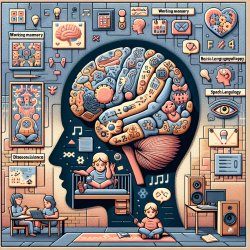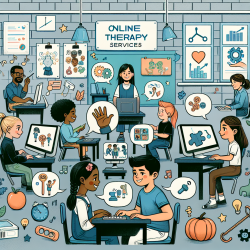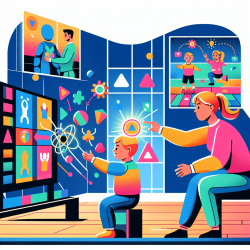Understanding Working Memory: A Key to Unlocking Child Development
As practitioners in speech-language pathology, our primary goal is to create optimal outcomes for children. One area of focus is working memory (WM), which plays a crucial role in a child's cognitive development and academic performance. Recent research, titled "Working Memory Filtering Continues to Develop into Late Adolescence," sheds light on the ongoing development of WM filtering capabilities in adolescents and adults.
The Study: Key Findings
The study conducted by Peverill et al. (2016) explored the neural mechanisms involved in WM filtering, particularly focusing on the basal ganglia's role. Using functional magnetic resonance imaging (fMRI), the researchers examined 64 participants, including adolescents and adults, to understand how WM filtering develops over time.
Key findings include:
- Adolescents and adults show different patterns of neural activity during WM tasks.
- Adults exhibit stronger recruitment of the basal ganglia during filtering tasks compared to adolescents.
- WM filtering capabilities continue to mature into late adolescence, unlike basic WM functions that plateau earlier.
Implications for Practitioners
These findings have significant implications for practitioners working with children and adolescents. Understanding that WM filtering continues to develop into late adolescence can guide interventions and support strategies. Here are some practical applications:
- Tailored Interventions: Design interventions that consider the ongoing development of WM filtering. Activities that challenge WM filtering, such as tasks involving distractions, can be gradually introduced as children mature.
- Supportive Environments: Create learning environments that minimize unnecessary distractions, allowing adolescents to focus on tasks that require WM filtering.
- Parental Guidance: Educate parents about the importance of WM development and encourage activities that support cognitive growth, such as puzzles and memory games.
Encouraging Further Research
The study highlights the need for further research into the development of WM filtering. As practitioners, staying informed about the latest research can enhance our practice and improve outcomes for children. Consider collaborating with researchers or participating in studies to contribute to the growing body of knowledge in this area.
To read the original research paper, please follow this link: Working memory filtering continues to develop into late adolescence.
Conclusion
Understanding the nuances of WM development, particularly filtering capabilities, is essential for practitioners aiming to support children's cognitive growth effectively. By incorporating research findings into practice, we can create more targeted interventions and foster environments conducive to learning and development.










